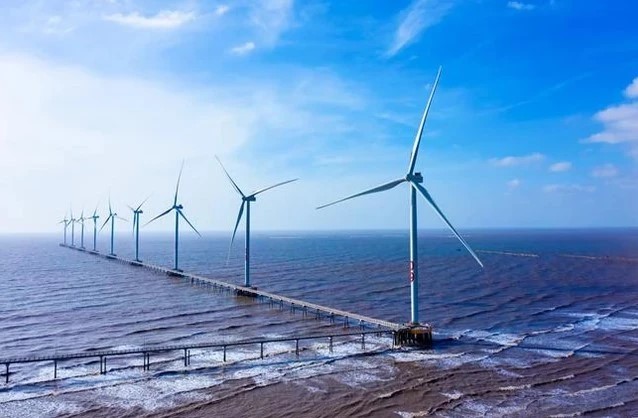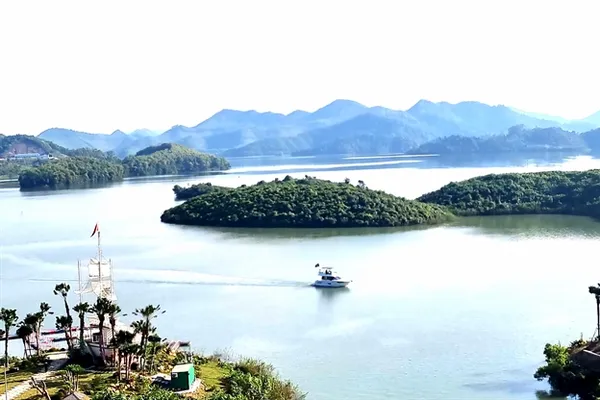 Economy
Economy


|
| A view of the Đông Hải 1 Windfarm in the southern province of Trà Vinh. VNA/VNS Photo |
HÀ NỘI - The opportunity for offshore wind power export could slip away if Việt Nam does not finalise the framework for the development of this renewable energy type within the next year, said industry insiders and exports.
Earlier, the Singapore government approved in principle the sale of 1.2GW from a 2.3GW offshore wind farm under the management of the PetroVietnam Technical Services Corporation (PTSC) - a member of the Vietnam Oil and Gas Group (PVN), to the Southeast Asian island nation through a high-voltage undersea cable.
The project, the first wind power sale from Việt Nam approved by Singapore, has received approval from the Vietnamese Ministry of Natural Resources and Environment (MoNRE) for monitoring, investigation, survey and assessment of marine resources (survey licence). Meanwhile, PTSC's Singaporean partner, Sembcorp Utilities Pte Ltd (SCU), a subsidiary of Sembcorp Industries Ltd, has received a letter of intent from the Singapore Ministry of Trade and Industry approving the project.
As the first Vietnamese company to receive the Singapore Government's approval for the implementation of the offshore wind farm project with a capacity of 2.3GW in Vietnam, exporting 1.2GW to the "Lion City" through a high-voltage undersea cable, the PetroVietnam Technical Services Corporation (PTSC), a member of the Vietnam Oil and Gas Group (PVN), is collaborating with Sembcorp Utilities Pte Ltd (SCU), a subsidiary of Sembcorp Industries Ltd, on the initial steps in the investment cooperation.
Director-general of PTSC Lê Mạnh Cường said the Singaporean Government had announced plans to import up to 4 GW of low-carbon electricity by 2035 and had outlined a progressive carbon tax schedule to achieve a net-zero carbon emission target by 2050. The island nation had approved power imports for several renewable projects, including 2GW from Indonesia, 1GW from Cambodia, and 1.2GW from Việt Nam.
Cường said so far it had been smooth sailing thanks to PTSC and PVN's extensive experience in the field. To date, PTSC had successfully won contracts for over 10 offshore wind projects with a total capacity of 5.2GW and a contract value exceeding US$1.2 billion, all of which would be for export.
He added the successful implementation of this deal would bring significant benefits, such as establishing Việt Nam as a hub for offshore wind power services for the region, contributing to Việt Nam's sovereignty over its islands, enhancing collaboration among ASEAN countries, and realising the goal of connected power grids in ASEAN. In addition, the underground power transmission cable could be used to set up a fibre optic cable connection to Singapore, which would bring substantial economic benefits in the future.
However, the Energy Market Authority (EMA) of Singapore could still look elsewhere if Việt Nam failed to come up with a framework to implement the deal within the next year.
There was competition to look out for. In August this year, the southernmost province Cà Mau submitted a proposal to the MoIT outlining a plan to export up to 5,000MW of renewable energy by 2040, Cường said.
Nguyễn Quốc Thập, Chairman of PVN, said offshore wind projects were complex, large investments and would require substantial incentives to encourage additional investors to jump in.
Based on international case studies, Thập said it would typically take 6-8 years for an offshore wind project to be fully implemented. Therefore, the establishment of policy mechanisms for the development of this renewable power source must be planned in a timely manner to prevent unnecessary delays. VNS




